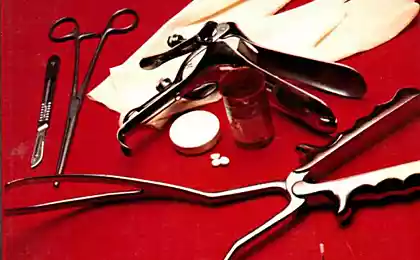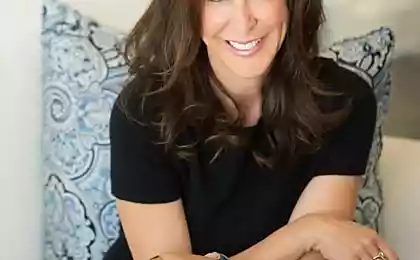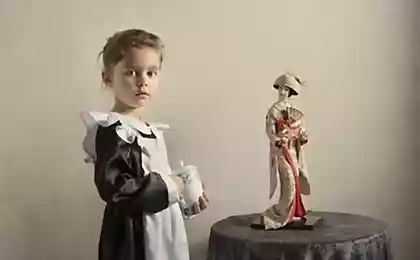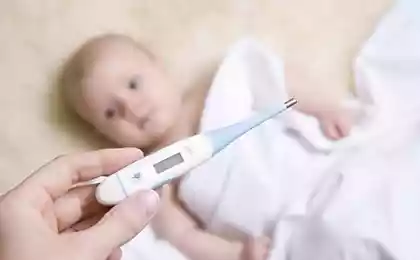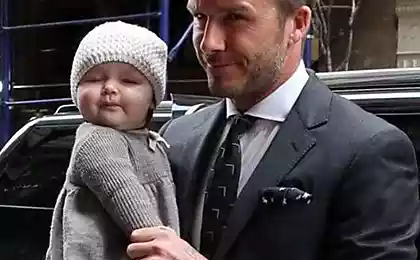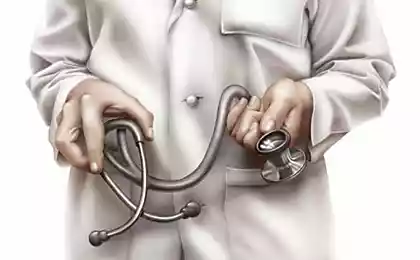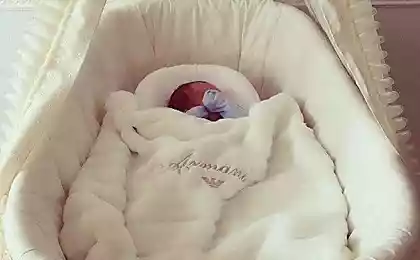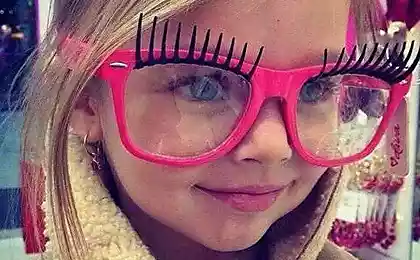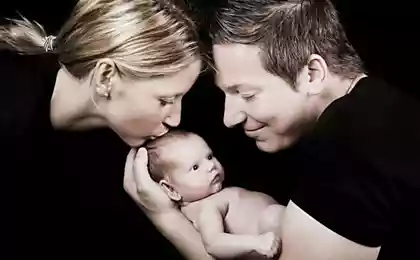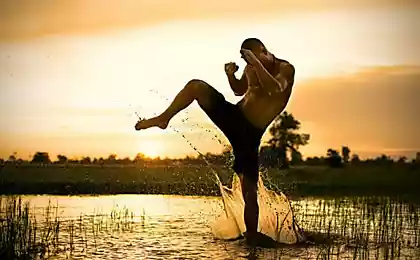568
Robert Mendelsohn: How to raise a healthy child in spite of the doctors 2

HOW are the LEGS Relinkable the child left close his mother's womb, his feet are four stages of development. To one and a half years, they can be in the form of the letter "o". With the development of muscles from walking and exercising the legs gradually straighten out. Between a half and two years of a child's feet usually take the form of "x" and this x-shaped curvature may last up to twelve years. In adolescence legs straightened again.
It is clear that at any stage of the natural development of the child doctors have the opportunity to correct conditions that, over time, adjust yourself, unless, of course, this not to interfere. Doctors have an additional advantage over the patients due to the huge variety of options for the development of children. The development of the lower extremities falls within the scope of their attention, named one of one enlightened expert "border orthopedics".
There is no adequate definition of the norm and anomalies in the development of the feet, as well as no officially announced normal forms of the nose and ears.
If the doctor is unable to diagnose a particular physiological state and prove convincingly that it needs treatment, no need any patch, neither the o - shaped or x-shaped legs until the child reaches adolescence. At this age, in all likelihood, everything will be fine.
If x-shaped legs to adolescence has not changed, it is most likely that the legs are not straightened due to the extra weight of the child. In this case, does not need a podiatrist, a nutritionist, and mother is best suited for this role. Except for rare cases of clubfoot, neurogenic disease or osteogenesis imperfecta. All these States are manifested by specific symptoms, beyond all norms.
SHOES CAN BE ANY
Attention parents feet their children, especially demonstrate in the stroller lying two-month infants at high shoes for twenty dollars. The baby doesn't walk yet, but he already has expensive equipment for high-speed one-mile Jogging! Of course, there is the desire of the parents to show off, because baby shoes are so cute, they even made the gift option.However, it seems that the majority of parents are confident that children will have problems with his feet, if from birth they will not wear "proper shoes". Needless to say that the representatives of the footwear industry will open mouth to dispel this misconception.
In the United States annually produces and sells a disproportionate amount of 600 million pairs of children's shoes, and producers and sellers make huge profits. At least one million pairs of shoes of expensive and unnecessary corrective orthopedic shoes.
For the normal development of the foot shoes are not necessary, neither expensive nor cheap. From the barefoot natives of the lower limbs are more developed than in millionaires clad "Gucci". The only function of shoes aside from beauty, to protect feet from cold and injuries. Does it make sense to spend on baby shoes lot of money for reasons not related to beauty and fashion? A pair of cloth tennis shoes to do this, not worse.
High expensive shoes will not help to improve the shape of the foot, as well as cheap running shoes won't cause flat feet, low instep, or mycosis of the feet, contrary to the opinion of many parents.
Observation on 104 healthy children in a clinic revealed: 87% of children wore shoes with high tops, 74 per cent – with the hard soles and 50 percent – with a special arch support. 75 children shoes before they started to walk, and 35 – before they stood up. None of the children were from the "right" shoes any good. Moreover, high shoes can slow the progression of the ankle joint and to prevent the development of the skills of walking.
Corrective shoes in most cases even less sense. There is no evidence that the wearing of expensive ammunition corrects any deviation from the norm (if it is at all definable). Except in cases of clubfoot or real deformities, orthopedic shoes does not provide any benefits that justify its cost. At the same time, the child wearing shoes, indicating the presence of a deformation, can suffer from emotional trauma. This applies to corrective corsets and braces.
O-shaped and x-shaped curvature of the legs and clubfoot – the most common reasons for orthopedic intervention, but not the only one. There are States, which are often incorrectly diagnosed, and then fix the aggressive methods.
One of them is congenital dysplasia of the hip in which the femur is improperly connected to the hip joint. True hip dysplasia can often be the consequence of a difficult birth in breech or foot presentation, it is joint dislocation.
This condition should be immediately corrected by the midwife: below hip back in place, he grabs the ankle of a newborn in a certain way.
In most cases this is sufficient to correct the pathology, if it ever took place. Congenital dysplasia of the hip, continuing after birth, is quite rare, although diagnosed often. Studies show that dysplasia occurs in about one case out of thousands, and perhaps two thousand.
Diagnose it this way: the child lies on the back with bent knees; the doctor spreads his knees the baby in hand; if one (or both) the knee resists, it indicates dysplasia of the hip.
Typically, this condition is corrected wide swaddling – in nappy is enclosed by a pillow or anything else as a small bus*.
Aggressive pediatricians, however, do not like such simple solutions. They prefer to do otherwise: it is a series of x-rays that expose the child to unreasonable exposures, and applying splints and prints. I want to warn parents of children with this disease: beware! Such treatment is usually ineffective, and plaster leads to muscle atrophy, disorders of blood circulation and emotional issues.
* Bus – a device that provides the immobility of the diseased or damaged body part (usually limbs). (Approx. ed.)
OVERDIAGNOSIS Scoliozei of the new fads of pediatricians was the diagnosis of scoliosis. This condition is more common in girls and is a lateral (side) curvature of the spine. To determine the presence of scoliosis can visually observing the child in the back.
Scoliosis is if:
• one shoulder blade sticks out or is noticeable above the other;
• the waistline is asymmetrical, curved on one side;
• hips tilted unevenly, tilting one hip is more pronounced;
• clearly visible curvature of the spine;
• when tilting one shoulder unusually elevated.
In the early years of my practice scoliosis is rarely diagnosed and even more rarely treated in children of school age. Today, the disease developed into an epidemic because of the growing Hobbies of x-ray examinations, which in some States have become widespread and regular. Doctors diagnose and treat scoliosis in these milder forms, which under normal inspection they would never have revealed. To treat such condition is not necessary.
I don't want to downplay the importance of treating scoliosis in severe cases. Over time, it can lead to serious deformities. However, I am convinced that the treatment of mild forms of scoliosis brings children more harm than disregard for the treatment of severe forms.
If a child is diagnosed with scoliosis, no need to hurry with the treatment, making sure that it is justified by the severity of the curvature, as it is not necessary to agree to any treatment without examining possible alternatives. In some cases, you may need to "Milwaukee brace" – uncomfortable metal design, covering the body from chin to thigh. It is designed for stretching and straightening the spine.
I would not put a child in this device until you have used less radical methods.
These include:
electronic means of biofeedback, exercises, deep muscle therapy, dance therapy, physical therapy and others. Surgery, in my opinion, should be a last resort and applied only when other measures failed. Before to take the job, consult with several specialists.
My advice about treatment of scoliosis reflects my opinion about all the diseases for which there are no clear definitions of norms and deviations. I believe that physicians should be guided by the principle "less is better", although many of them do the opposite.
If the doctor recommends draconian methods of treatment, you can't trust his advice implicitly. Carefully weigh the consequences of treatment, consider alternatives, and ask the doctor proved the necessity of the proposed methods. Then, if doubts remain, do not take money, and effort on further consultations with other doctors.
A quick guide on orthopedic problemimage it comes to the physique of the child, clear definitions of the norm and deviations are almost there. Many features of the physical development in early childhood can seem like a deviation from the norm – for example, twisted legs or club feet. Nevertheless, this is just a phase of normal development. They don't usually require special attention and almost never treatment. You will avoid many unnecessary interventions and save a lot of money, if you remember the following.
1. Young children's feet are always flat, because under their set of located fat pads. And even if the flat is a baby has this genetic feature requires neither treatment nor wear corrective shoes. People with flat feet suffer from the diseases of feet less than those in which the arch of the foot is elevated.
2. Almost all children are born with twisted legs straighten as muscle development. To two years most children have the legs become x-shaped, disappearing to 12-16 years. This condition requires treatment only in adolescence.
3. Congenital hip dysplasia is very rare and even more rarely requires surgery or overlay prints. Light her forms are often treated unnecessarily aggressive.
Do not allow the pediatrician to use extreme methods, without making sure of their necessity. In most cases, no treatment is required; sometimes wide enough changing in which diaper is enclosed by a pillow or anything else as a small bus.
4. Scoliosis is usually not harmful, except in cases of strong curvature, but due to overdiagnosis it is treated even in mild forms. If a child is diagnosed with scoliosis, do not settle on an operation and even treatment by using brackets, not having tried less drastic ways of correcting posture.
ACCIDENTS AND Tramine always seemed paradoxical that a non-hazardous, ordinary diseases parents perceive as a real threat to the health of children and at the same time almost no fear of accidents and injuries, which kill more children than all childhood diseases combined.
Every year in the United States from injuries, accidents and fatalities more than 8 thousand children under fifteen years. Many accidents are preventable and many of them tragic outcome can be avoided if the time to take action.
This Chapter I conclude with a brief guide that can help to save a child from death or injury in an accident. In the Chapter I will present practical advice on what to do if a child was in an emergency situation.
Most minor bruises and scratches care physician is not required, however, in severe injuries of the child must be urgently taken to the hospital. How to distinguish minor injury from a serious? The most important thing in case of accident with a child is not to panic. It's not easy. Even minor cuts sometimes bleed very much, and a small amount of blood on the white shirt of the child can scare half to death.
Nevertheless, keep calm need from adults is required to take quick and correct decisions. Will have to decide whether you have enough severe trauma to seek medical attention; whether to rush the victims to hospital immediately, or call the doctor; call an ambulance or take the child to his car. Even in cases that clearly require hospitalization, have to decide what measures emergency first aid to take.
In this Chapter I will talk about how to determine the severity of the injury of the child and what to do in the home when medical assistance is not needed.
The main rule in all cases of care of the child should be: if in doubt, one should act in the most safe manner.
When serious injuries are advised to contact the Department of traumatology and emergency care not only because of the assistance they will render very quickly. I believe that this is where you can get the best from American medicine. The majority of the doctors in the emergency departments are better trained, more able and more experienced than their colleagues from other divisions. In addition, they are familiar with emergency situations and properly react to them. If the child received a serious injury, these offices – the best places where it will help.
CUTS AND Sudanese parents understand that cut fingers and skinned knees – the usual for kids phenomenon, but I am sure that many of them don't know what to do with it. There is a widespread belief that any damage to the skin antiseptics and even antibiotics "for the prevention of infection".
Whenever the child will cut your finger or scrape your knee, the parents rush to the medicine chest for stashed in this case "radical" means. This should not be done. Such tools are not needed – they can only add to the child trouble.
The majority of local antiseptics, sold in a pharmacy without a prescription: iodine, hydrogen peroxide, brilliant green, and the ointment of all compounds – can cause irritation of the affected tissues, but is unlikely to affect microbes. The body – our own ways of dealing with the infection, which is quite effective, if they are allowed to operate freely.
What to do if a child received a slight cut or scrape? Very little. Gently rinse the scrape with running water to wash away the dirt. If you want to stop the bleeding, cover the wound with a clean bandage. If the blood does not flow, leave the affected area open to the free access of air. Nothing more with small cuts and abrasions do not need.
Medical assistance may be necessary if you cannot stop the bleeding or the wound is so extensive that it required stitches to promote healing or for cosmetic reasons. As I said, it is best in these cases to contact the emergency room or the emergency room.
Heavy bleeding – a situation in which you need to act very quickly, without waiting for professional assistance. If the blood is from a vein, forget everything you know about overlaying harness, and stop the blood by simple pressure on the wound: covering it with a clean cloth or bandage, secure arm to stop bleeding or prior to arrival at the hospital.
The waist strap should be used only when blood gushes out of the artery: this measure leads to the cessation of blood circulation in the injured limb. And in those rare cases when the hauling harness is justified, it is possible to leave only one or two minutes. When circulation is shut off for a long time, the affected limb can lose.
Many parents ask, do I have to get a tetanus shot every time when you cut yourself or get a bruise. Most children are vaccinated against tetanus as a child (the letter "C" in the abbreviated name DTP vaccination*), but some doctors insist on re-vaccination in case of injuries.
* DPT is the vaccine diphtheria-pertussis-tetanus. (Approx. ed.)
In my youth I was taught that the danger of tetanus occurs when a wound has occurred on the farm include manure, or rusty nail. So I was revaktsinirujut their patients from tetanus whenever they received these wounds. Every ten years I was also vaccinated to prevent.
Today I doubt that the extra vaccination and even the use of tetanus antitoxin is needed at all. There is no scientific data nor the timing of re-vaccination against tetanus, nor need them at all.
At the beginning of the Second world war millions of American soldiers had been vaccinated against tetanus. After four decades, with a few exceptions, their immunity lasts. This gives a powerful argument against revaccinate tetanus more often than once in forty years!
Source: /users/1077
Immortal cars
Without emotion, rational behavior would be impossible: neuroscientists about the mechanics of decision-making
